Anti Gut Bacteria Antibodies
The human gut contains a wide variety of microorganisms, including bacteria, which form diverse microbiotas that are well adapted to their environment. These microbiotas, along with their metabolic products, have been linked to various diseases such as cancer, diabetes, obesity, allergies, and neuropsychiatric disorders, and are drawing increasing attention for their role in human health. Although next-generation sequencing (NGS) is the primary method for analyzing gut bacteria, it continues to be both labor-intensive and costly.
Developed by Dr. Jun Kunisawa and Dr. Ken Yoshii at the National Institutes of Biomedical Innovation, Health and Nutrition, Fujifilm Wako now offers monoclonal antibodies against gut bacteria1). These antibodies target Phocaeicola vulgatus (formerly Bacteroides vulgatus), Faecalibacterium duncaniae (formerly Faecalibacterium prausnitzii), and Segatella copri (formerly Prevotella copri). They are suitable for use in ELISA, flow cytometry, immunoprecipitation, and Western blotting, allowing for rapid, simple, and cost-effective detection of gut bacteria.
Background to the Development of Antibodies Against Gut Bacteria
The human gut contains a wide variety of microorganisms, including bacteria, which form diverse microbiotas that are well adapted to their environment. These microbiota, along with their metabolic products, have been linked to various diseases such as cancer, diabetes, obesity, allergies, and neuropsychiatric disorders, and are drawing increasing attention for their role in human health.
Gut bacteria such as Phocaeicola vulgatus, Faecalibacterium duncaniae, and Segatella copri. are commonly found in the Japanese population. By analyzing their relative abundance and identifying the enterotype of the gut microbiota, researchers can better understand an individual's intestinal environment. Although next-generation sequencing (NGS) is the primary method for analyzing gut bacteria, it continues to be both labor-intensive and costly.
As part of their effort to establish a rapid, cost-effective, and straightforward method for detecting gut bacteria, the research group led by Dr. Jun Kunisawa and Dr. Ken Yoshii at the National Institutes of Biomedical Innovation, Health and Nutrition has developed monoclonal antibodies that recognize the gut bacterial species specified above1). Using a non-targeted approach involving direct immunization of mice with individual bacterial strains, they successfully generated antibodies capable of recognizing these bacterial species.
Product Lineup
Fujifilm Wako has a lineup of antibodies against the following three types of gut bacteria.
| Name | Phocaeicola vulgatus | Faecalibacterium duncaniae | Segatella copri | |||||
|---|---|---|---|---|---|---|---|---|
| Overview |
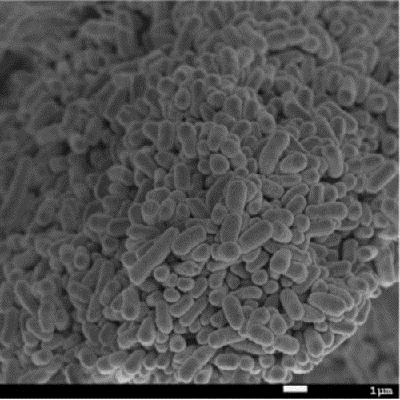 |
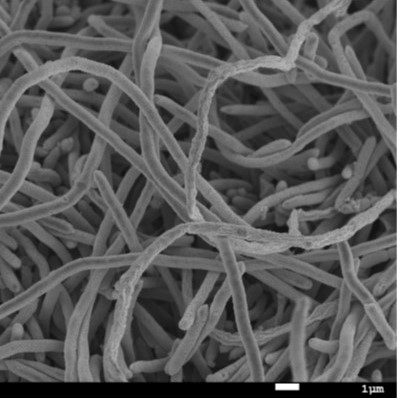 |
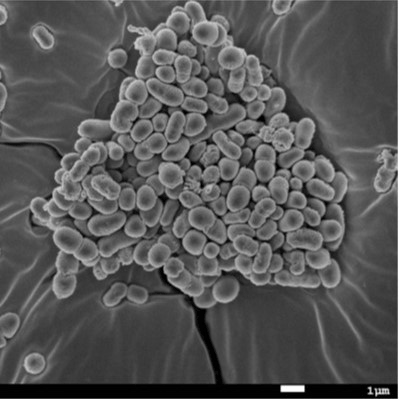 |
|||||
| Product No. | 013-28931 | 010-28941 | 017-28951 | 012-28901 | 019-28911 | 016-28921 | 014-28961 | 011-28971 |
| Clone No. | PV-L2B7-117K1 | PV-L1A6-117K2 | PV-S10F7-14K1 | FD-S2D3-18K1 | FD-L4F6-18K2 | FD-L5B6-33K2 | SC-S10C3-49K1 | SC-L10B5-35K1 |
| Subclass | IgG2b | IgG2b | IgG3 | IgG2b | IgG2b | IgG2b | IgG2a | IgG2a |
| Host | Mouse | |||||||
| Formulation | 1 x D-PBS, 0.05% Sodium azide | |||||||
| Application | ELISA (Direct/Sandwich*), Flow cytometry, Immunoprecipitation, Western blotting | |||||||
Note: Product code 017-28951 is not compatible with sandwich ELISA applications.
Photos by courtesy of Dr. Jun Kunisawa, National Institutes of Biomedical Innovation, Health and NutritionData
Quantification of Individual Gut Bacterial Species by Sandwich ELISA and Comparison with 16S rRNA Gene-Based NGS
Bacterial counts in three human fecal samples were measured using sandwich ELISA with combinations of anti-gut bacterial antibodies. Relative abundances obtained by sandwich ELISA were compared with those obtained from 16S rRNA gene amplicon sequencing via NGS1).
- Combination of antibodies in ELISA
-
(1) P. vulgatus
Capture Antibody: PV-L1A6-117K2
Detection Antibody: PV-L2B7-117K1(2) F. duncaniae
Capture Antibody: FD-S2D3-18K1
Detection Antibody: FD-L4F6-18K2(3) S. copri
Capture Antibody: SC-S10C3-49K1
Detection Antibody: SC-S10C3-49K1
Quantification of Gut Bacterial Counts by Sandwich ELISA
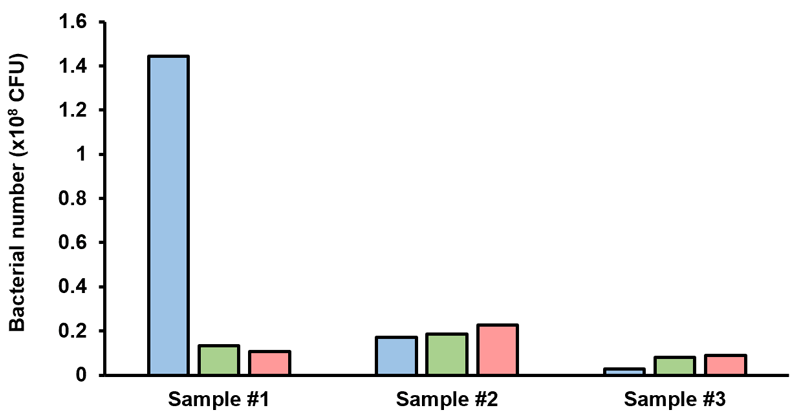
- Phocaeicola vulgatus
- Faecalibacterium duncaniae
- Segatella copri
Comparison with 16S rRNA Gene-Based NGS
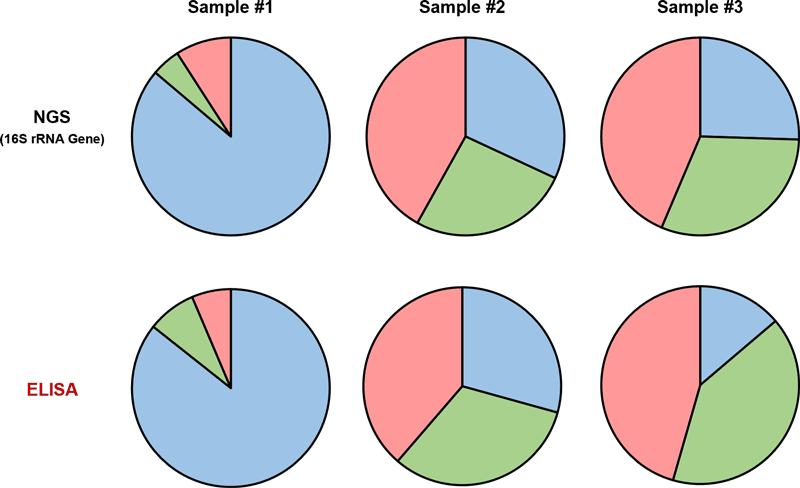
- Phocaeicola vulgatus
- Faecalibacterium duncaniae
- Segatella copri
ELISA
100 μL of a bacterial suspension was added to a 96-well microplate to coat the wells. The suspension was prepared either by diluting freeze-dried, heat-inactivated bacteria in PBS or by suspending them in B-PER solution followed by lysis with glass beads. After blocking and washing the antigen-coated plate, culture supernatants from individual hybridoma clones were added and incubated for 2 hours. Antibodies against gut bacteria bound to the antigens were detected using HRP-conjugated goat anti-mouse IgG1).

- P. vulgatus
- F. duncaniae
- S. copri
- B. pseudocatenulatum
- B. longum
- B. wexlerae
- A. muciniphila
Flow Cytometry
After fixation with Farmer’s fixative (ethanol:acetic acid = 7:3), the bacteria were centrifuged at 13,040 x g for 2 minutes at 4 °C. Next, 100 μL of the bacterial suspension was mixed with 1 μg of anti-gut bacterial antibody in PBS-T containing 1% BSA and incubated on ice for 1 hour. After washing, FITC-conjugated anti-mouse IgG was added, and the sample was incubated for 30 minutes on ice in the dark. The stained bacteria were then washed and analyzed by flow cytometry1).
Anti-P. vulgatus
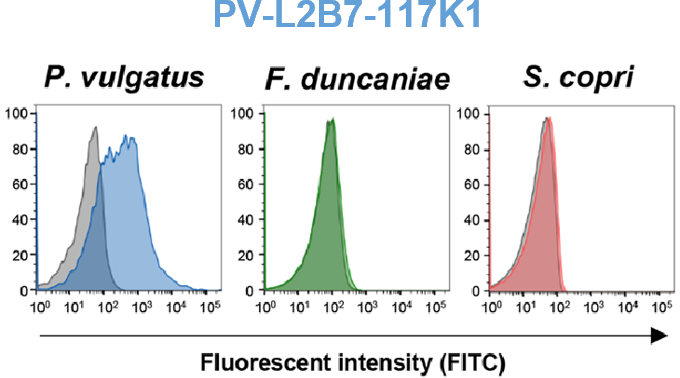
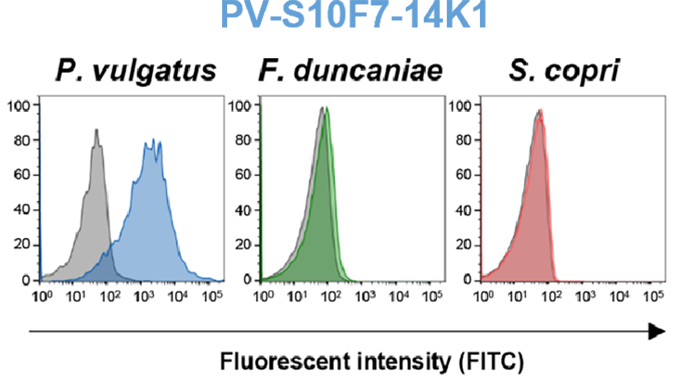
Anti-F. duncaniae
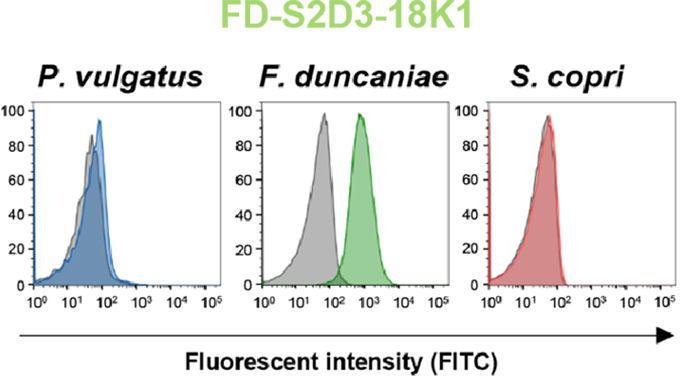
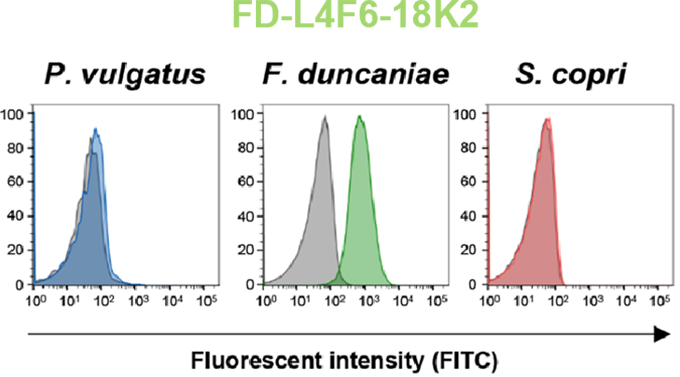
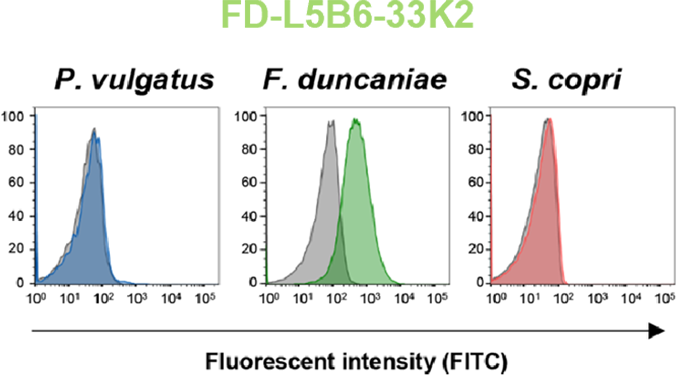
Anti-S. copri
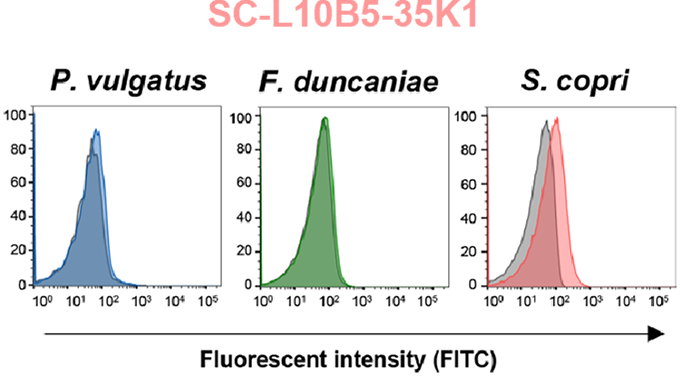
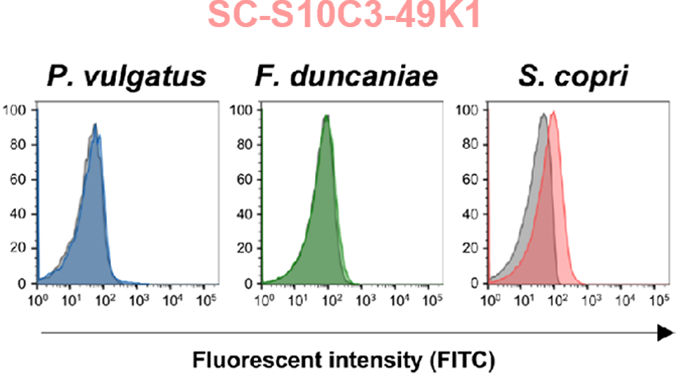
Data were compiled from reference 1) with permission from the author.
Western Blotting
Gut bacterial strains were collected by centrifugation at 10,000 x g for 5 minutes. Two micrograms of protein were separated by SDS-PAGE, transferred to a PVDF membrane, and blocked. Immunodetection was performed using 25–50 ng/mL of anti-gut bacterial antibody and HRP-conjugated mouse IgG1).
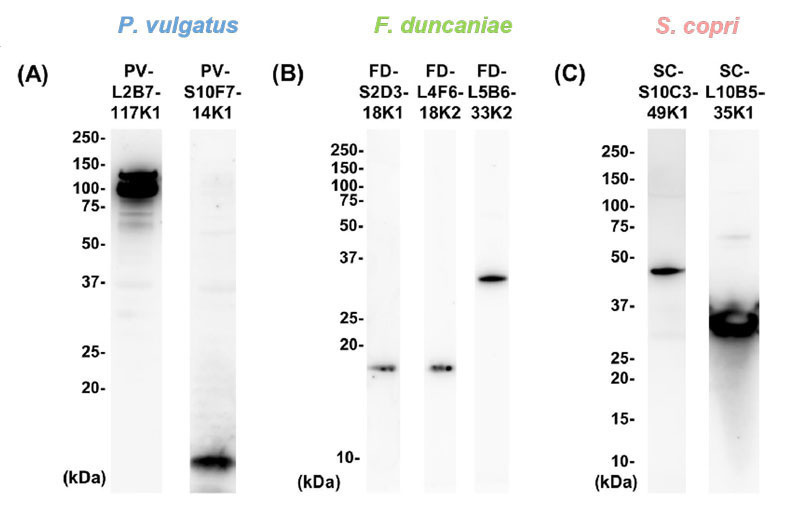
The samples used are gut bacteria extracts, as shown below.
- P. vulgatus
- : Phocaeicola vulgatus JCM5826
- F. duncaniae
- : Faecalibacterium duncaniae JCM31915
- S. copri
- : Segatella copri JCM13464
Data were compiled from reference 1) with permission from the author.
References
- Yoshii, K. et al.: Sci. Rep., 15(1), 1(2025).
Establishment of enterotype-specific antibodies for various diagnostic systems
Product List
- Open All
- Close All
Anti Phocaeicola Antibodies
Anti Faecalibacterium Antibodies
Anti Segatella Antibodies
For research use or further manufacturing use only. Not for use in diagnostic procedures.
Product content may differ from the actual image due to minor specification changes etc.
If the revision of product standards and packaging standards has been made, there is a case where the actual product specifications and images are different.
The prices are list prices in Japan.Please contact your local distributor for your retail price in your region.



